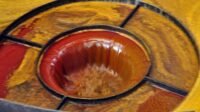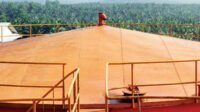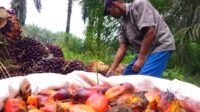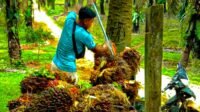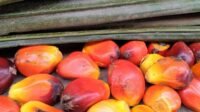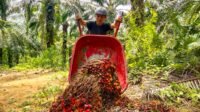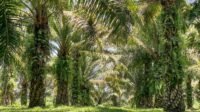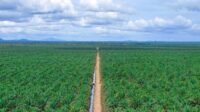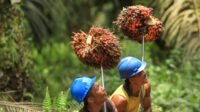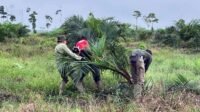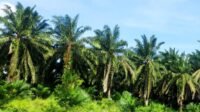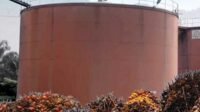PALMOILMAGAZINE, MEDAN – The soft fern Nephrolepis biserrata, which often grows at the base of oil palm trees, should not be removed. According to Djend Muhayat, a researcher at the Indonesian Oil Palm Research Institute (IOPRI/PPKS), this fern provides ecological benefits that support oil palm plantations.
Djend explained that Nephrolepis biserrata helps maintain soil moisture by holding rainwater that drips from the palm canopy, keeping the surrounding microclimate stable. “This fern should never be uprooted or destroyed. Its presence helps preserve soil moisture and plays a key role in supporting palm growth,” he told Palmoilmagazine.com on Monday (Sept. 1, 2025).
Beyond soil benefits, the fern also acts as a shelter for natural enemies of pests, such as parasitoids that prey on bagworms and nettle caterpillars—two major pests in oil palm cultivation. This makes the fern a valuable ally in natural pest control, reducing the need for excessive pesticide applications.
Also Read: BRIN Explores Palm Oil Waste for High-Performance Supercapacitors
Djend further emphasized that Nephrolepis biserrata is an epiphytic plant, meaning it does not compete with oil palms for nutrients. Instead, it enhances the plantation ecosystem by balancing the microclimate. “When humidity drops, it can affect flower development, causing female flowers to turn into male flowers. That’s why the role of this fern is highly significant,” he added.
For this reason, IOPRI/PPKS is urging farmers and estate managers not to clear Nephrolepis biserrata from their plantations. “This fern is not a harmful weed—it is part of the natural system that helps sustain palm productivity,” Djend stressed. (P2)




